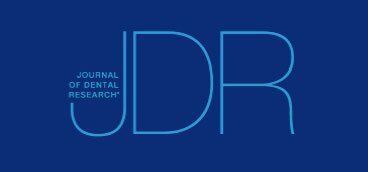
“Objective: The aim of this study was to: (1) evaluate the anti-inflammatory effects of cannabidiol (CBD) on primary cultures of human gingival fibroblasts (HGFs) and (2) to clinically monitor the effect of CBD in subjects with periodontitis.
Background: The use of phytocannabinoids is a new approach in the treatment of widely prevalent periodontal disease.
Materials and methods: Cannabinoid receptors were analyzed by western blot and interleukin production detected using enzyme immunoassay. Activation of the Nrf2 pathway was studied via monitoring the mRNA level of heme oxygenase-1. Antimicrobial effects were determined by standard microdilution and 16S rRNA screening. In the clinical part, a placebo-control double-blind randomized study was conducted (56 days) in three groups (n = 90) using dental gel without CBD (group A) and with 1% (w/w) CBD (group B) and corresponding toothpaste (group A – no CBD, group B – with CBD) for home use to maintain oral health. Group C used dental gel containing 1% chlorhexidine digluconate (active comparator) and toothpaste without CBD.
Results: Human gingival fibroblasts were confirmed to express the cannabinoid receptor CB2. Lipopolysaccharide-induced cells exhibited increased production of pro-inflammatory IL-6 and IL-8, with deceasing levels upon exposure to CBD. CBD also exhibited antimicrobial activities against Porphyromonas gingivalis, with an MIC of 1.5 μg/mL. Activation of the Nrf2 pathway was also demonstrated. In the clinical part, statistically significant improvement was found for the gingival, gingival bleeding, and modified gingival indices between placebo group A and CBD group B after 56 days.
Conclusions: Cannabidiol reduced inflammation and the growth of selected periodontal pathogenic bacteria. The clinical trial demonstrated a statistically significant improvement after CBD application. No adverse effects of CBD were reported by patients or observed upon clinical examination during the study. The results are a promising basis for a more comprehensive investigation of the application of non-psychotropic cannabinoids in dentistry.”






 “Oral ulcer is a common oral inflammatory lesion accompanied by severe pain but with few effective treatments. Cannabidiol (CBD) is recently emerging for its therapeutic potential in a range of diseases, including inflammatory conditions and cancers.
“Oral ulcer is a common oral inflammatory lesion accompanied by severe pain but with few effective treatments. Cannabidiol (CBD) is recently emerging for its therapeutic potential in a range of diseases, including inflammatory conditions and cancers. “Streptococcus mutans
“Streptococcus mutans “Burning mouth syndrome (BMS) is a neuropathic pain disorder associated with a burning sensation on oral mucosal surfaces with frequently reported xerostomia, dysgeusia and tingling or paraesthetic sensations. However, patients present no clinically evident causative lesions. The poor classification of the disorder has resulted in a diagnostic challenge, particularly for the clinician/dentist evaluating these individuals. Major research developments have been made in the BMS field in recent years to address this concern, principally in terms of the pathophysiological mechanisms underlying the disorder, in addition to therapeutic advancements. For the purpose of this review, an update on the pathophysiological mechanisms will be discussed from a neuropathic, immunological, hormonal and psychological perspective. This review will also focus on the many therapeutic strategies that have been explored for BMS, including antidepressants/antipsychotics, nonsteroidal anti-inflammatories, hormone replacement therapies, phytotherapeutic compounds and non-pharmacological interventions, overall highlighting the lack of controlled clinical studies to support the effectiveness of such therapeutic avenues. Particular focus is given to the
“Burning mouth syndrome (BMS) is a neuropathic pain disorder associated with a burning sensation on oral mucosal surfaces with frequently reported xerostomia, dysgeusia and tingling or paraesthetic sensations. However, patients present no clinically evident causative lesions. The poor classification of the disorder has resulted in a diagnostic challenge, particularly for the clinician/dentist evaluating these individuals. Major research developments have been made in the BMS field in recent years to address this concern, principally in terms of the pathophysiological mechanisms underlying the disorder, in addition to therapeutic advancements. For the purpose of this review, an update on the pathophysiological mechanisms will be discussed from a neuropathic, immunological, hormonal and psychological perspective. This review will also focus on the many therapeutic strategies that have been explored for BMS, including antidepressants/antipsychotics, nonsteroidal anti-inflammatories, hormone replacement therapies, phytotherapeutic compounds and non-pharmacological interventions, overall highlighting the lack of controlled clinical studies to support the effectiveness of such therapeutic avenues. Particular focus is given to the  “Dental plaque is a complex biofilm that gets formed on the teeth and acts as a reservoir of different microbes. It is the root cause for the occurrence of several dental problems and diseases, including cavities, bad breath, bleeding gums, tooth decay, and tooth loss. Therefore, it should be regularly removed using suitable oral care aids.
“Dental plaque is a complex biofilm that gets formed on the teeth and acts as a reservoir of different microbes. It is the root cause for the occurrence of several dental problems and diseases, including cavities, bad breath, bleeding gums, tooth decay, and tooth loss. Therefore, it should be regularly removed using suitable oral care aids.